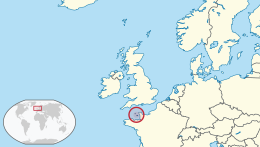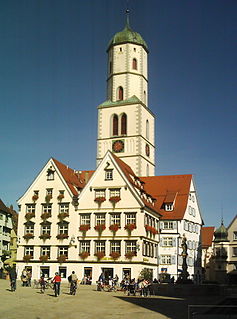
Biberach an der Riss, often referred to as simply Biberach, is a town in southern Germany. It is the capital of Biberach district, in the Upper Swabia region of the German state (Land) of Baden-Württemberg. It is called Biberach an der Riss after the small river Riss which flows through the city to distinguish it from the other towns of similar names.

Laufen is a town in Berchtesgadener Land district in Bavaria at the Austria–Germany border.

Despite its small size, the population of Jersey is made of people with a diverse range of religions and beliefs. Traditionally seen as a Christian island, Jersey's established church is the Church of England, and Anglicanism and Catholicism are practised on the island in roughly equal numbers. Together, these religions account for around half the population of Jersey. Other denominations of Christianity and other religions such as Islam, Judaism, Sikhism, and Buddhism account for handfuls of people on the island. In recent years, irreligion has been an increasing force in Jersey, with two fifths of the population identifying as having no religion. This number rises to 52% for Jersey people under 35.

Battonya is a town in Békés County, in the Southern Great Plain region of south-east Hungary. Residents are Magyars, with minority of Serbs and Romanians.
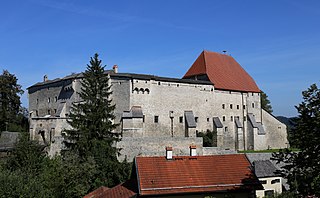
Oflag VII-D was a World War II German prisoner-of-war camp for officers (Offizierlager) located in Tittmoning Castle in south-eastern Bavaria.

Oflag VII-C was a World War II German prisoner-of-war camp for officers located in Laufen Castle, in Laufen in south-eastern Bavaria from 1940 to 1942. Most of the prisoners were British officers captured during the Battle of France in 1940. To relieve overcrowding, some of the officers were transferred to Oflag VII-C/Z in Tittmoning Castle. The Oflag existed only for a short time. In early 1942 all the officers were transferred to Oflag VII-B in Eichstätt.
Oflag V-B was a World War II German prisoner-of-war camp for officers (Offizierlager), in operation from 1940 until 1942. It was located in Biberach in south-eastern Baden-Württemberg.
Ilag is an abbreviation of the German word Internierungslager. They were internment camps established by the German Army in World War II to hold Allied civilians, caught in areas that were occupied by the German Army. They included United States citizens caught in Europe by surprise when war was declared in December 1941 and citizens of the British Commonwealth caught in areas engulfed by the Blitzkrieg.
The Belfast Jewish Community is the Jewish community in Belfast, Northern Ireland. Its Rabbi is the Rev David Kale. The community follows the Ashkenazi Orthodox ritual. Membership has fluctuated from 78 in 1900, approximately 1500 during World War II, about 375 after World War II, to 350 in 1945, 380 in 1949 and 200 in 1999. The congregation was fewer than 80 people as of January 2015.

The Blackpool Reform Jewish Congregation is a Reform Judaism congregation in Blackpool, Lancashire, England.

Laufen Castle (German: Schloss Laufen is a square-shaped castle overlooking the Salzach river that was built for the Archbishop of Salzburg in the 15th Century. The castle is located in the town of Laufen in the German state of Bavaria. During the Second World War, it was the site of Oflag VII-C, and later of Ilag VII.
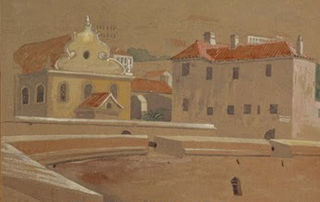
The four active synagogues of Gibraltar are colloquially known as the Great Synagogue, the Little Synagogue, the Flemish Synagogue, and the Abudarham Synagogue. The first synagogue established after the 1717 expulsion of Jews from Gibraltar, the Great Synagogue, was built on what is now known as Engineer Lane, and remains Gibraltar's principal synagogue. The Little Synagogue, founded in 1759 in Irish Town, was the result of the desire of Moroccan Jews for a less formal service. The lavish Flemish Synagogue was built at the turn of the nineteenth century on Line Wall Road, due to the request of some congregants for a return to more formal, Dutch customs. The last synagogue to be established in what is now the British overseas territory of Gibraltar, the Abudarham Synagogue, was founded in 1820 on Parliament Lane by recent Moroccan immigrants.
John George Lingshaw was a British collaborator who worked in Germany on Nazi propaganda during World War II. In 1946, he was convicted of offences under the Defence Regulations and sentenced to five years penal servitude.
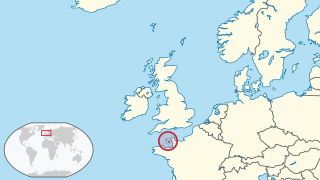
The history of the Jews in Guernsey dates back to well before the events of 1940–5. A London Jew named Abraham was described in 1277 as being from "La Gelnseye" (Guernsey). A converted Portuguese Jew, Edward Brampton, was appointed Governor of Guernsey in 1482.

On direct instructions from Adolf Hitler, Nazi German forces deported and interned 2,300 Channel Islands civilian residents. The stated reason was retaliation for internment of German citizens in Persia by the British Government.

The Lauderdale Road Spanish & Portuguese Synagogue is a synagogue in Maida Vale on Lauderdale Road in West London. It is the community hub of the S&P Sephardi Community also known as Qahal Qadosh Shaar Shamayim which is Britain's oldest Jewish community and largest of Sephardi origin which also operates Bevis Marks Synagogue and Holland Park Synagogue.

The history of the Jews in the Isle of Man goes back to at least the early 19th century.

Kingston upon Hull, on England's East Coast was, by 1750, a major point of entry into Britain for traders and migrants, second only to London for links to the continent. Around then, a few Jews from German and Dutch cities lodged and settled in Hull. Selling jewelry and dealing goods in the thriving port and market town, they maintained contacts with Europe, London, and many other – particularly Northern – towns. The small community produced its own institutions and leaders, which were tested by anti-Jewish sentiment, and later by an influx of East-European refugees.
The city of Leeds, in West Yorkshire, England has a Jewish community, where many notable people originated or settled. They have played a major part in the clothing trade, the business, professional and academic life of the City, and the wider world. The community numbers now less than 7,000 people.



